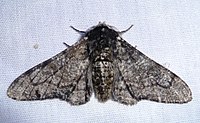
Maturation reaction norm evolution under varying conditions of eco-evolutionary change
Sign Up to like & getrecommendations! Published in 2021 at "Canadian Journal of Fisheries and Aquatic Sciences"
DOI: 10.1139/cjfas-2020-0274
Abstract: Probabilistic maturation reaction norms (PMRNs) are commonly used to infer evolution of maturation age and size in wild fish stocks, but how well estimates from phenotypic data actually reflect underlying genotypes is debated. We used… read more here.
Keywords: maturation; maturation reaction; phenotypic data; evolution ... See more keywords

Circadian Rhythms of Urinary Cortisol Levels Vary Between Individuals in Wild Male Chimpanzees: A Reaction Norm Approach
Sign Up to like & getrecommendations! Published in 2018 at "Frontiers in Ecology and Evolution"
DOI: 10.3389/fevo.2018.00085
Abstract: Investigating the repeatability of trait variation between individuals, that is the amount of individual variation in relation to overall phenotypic variation, indicates an upper level of heritability and reveals whether a given trait may be… read more here.
Keywords: trait; urinary cortisol; cortisol levels; repeatability ... See more keywords

Integrating a growth degree-days based reaction norm methodology and multi-trait modeling for genomic prediction in wheat
Sign Up to like & getrecommendations! Published in 2022 at "Frontiers in Plant Science"
DOI: 10.3389/fpls.2022.939448
Abstract: Multi-trait and multi-environment analyses can improve genomic prediction by exploiting between-trait correlations and genotype-by-environment interactions. In the context of reaction norm models, genotype-by-environment interactions can be described as functions of high-dimensional sets of markers and… read more here.
Keywords: multi trait; reaction norm; methodology;

Colour change of twig-mimicking peppered moth larvae is a continuous reaction norm that increases camouflage against avian predators
Sign Up to like & getrecommendations! Published in 2017 at "PeerJ"
DOI: 10.7717/peerj.3999
Abstract: Camouflage, and in particular background-matching, is one of the most common anti-predator strategies observed in nature. Animals can improve their match to the colour/pattern of their surroundings through background selection, and/or by plastic colour change.… read more here.
Keywords: peppered moth; colour change; change; continuous reaction ... See more keywords